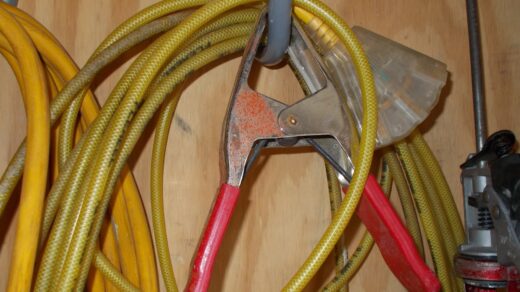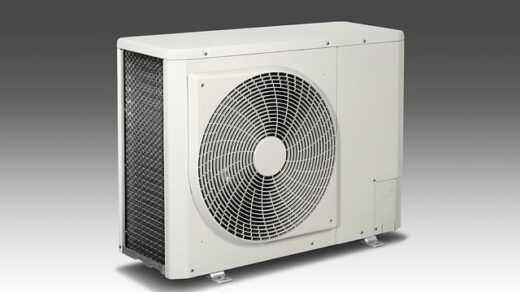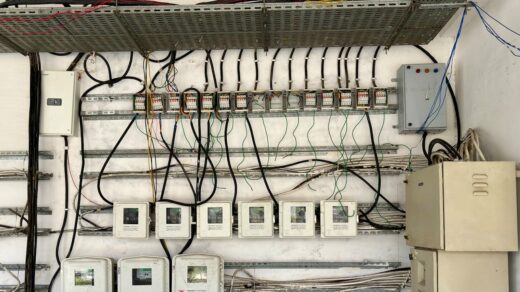Table of content:
- What Exactly Is a Fuse Box?;
- The Aftermath of a Fuse Breakage;
- Steps to Revive a Blown Fuse Box;
- Understanding Circuit Breakers;
- The Phenomenon of Circuit Tripping;
- Reviving a Tripped Circuit Breaker;
- Deciphering the Causes of Fuse and Circuit Issues;
- Concluding Thoughts on Home Electrical Systems.
In the Seattle, WA vicinity, every residence has an electrical hub, either in the form of a fuse box or a circuit breaker. This control panel is responsible for managing the electrical voltage coming from the power company and ensures the home’s grounding. When issues arise, such as a fuse blowing or circuit tripping, understanding the problem is essential. Persistent issues demand a professional’s attention to ascertain the root cause and to restore the disrupted power segment.
What Exactly Is a Fuse Box?
In these older residences, fuse boxes were an integral part of the home’s electrical infrastructure. Their design was tailored to the electrical demands of the era, which were significantly less than today’s technology-driven households. As families used fewer gadgets and appliances, the need for intricate electrical systems was minimal. These fuses, although rudimentary by today’s standards, were remarkably efficient in their primary role – safeguarding the home against potential electrical hazards.
Yet, as technology progressed, so did the strain on these older systems. The continual use of new-age appliances and devices often meant these fuses faced frequent challenges, often culminating in them breaking due to overload. This, in turn, gave rise to frequent replacements, underscoring the evolving limitations of such systems in the face of growing electrical demands. Furthermore, the reliance on a system where a broken component required manual replacement became less practical. The tedious task of unscrewing a burnt-out fuse and replacing it with a new one, especially in the middle of the night or during inclement weather, was far from convenient. This marked the beginning of a shift in electrical system designs, paving the way for more resilient and user-friendly options like circuit breakers in modern homes.
The Aftermath of a Fuse Breakage
The intricacies of a fuse’s design underscore the significance of its safety function. This thin strip of metal, though seemingly unassuming, plays a pivotal role in acting as the frontline defense against electrical surges. When there’s an unforeseen spike in electrical flow, this strip acts as a sacrificial component, bearing the brunt of the excess charge, thus shielding the home and its devices from potential harm.
- But, while this safeguard mechanism is indeed effective, it’s not without consequences. The act of the metal strip melting can result in a surge of electricity, even if for a brief moment. Devices plugged in during this surge can suffer severe damage, from fried circuits to complete malfunction. More alarmingly, the surge could potentially cause the internal wiring of a home to overheat, posing fire risks and compromising the entire electrical system’s integrity.
In essence, while fuses are designed to protect, the aftermath of their operation requires immediate attention. Any delay in addressing a blown fuse not only leaves a portion of the house without power but also exposes the household to potential electrical hazards. The recurring theme is clear: while fuses are protective, vigilance in their maintenance and replacement is crucial.
Steps to Revive a Blown Fuse Box
Navigating the labyrinth of an old fuse box system requires patience, understanding, and a methodical approach. Ensuring safety is paramount. An unchecked electrical glitch could result in significant damage to both appliances and the house’s broader wiring system. Consequently, a systematic revival process is essential to prevent unexpected mishaps.
While the process might sound straightforward, many homeowners often overlook the simple precautions. Ignoring the step of unplugging devices or hastily resetting the fuse without proper inspection can be a recipe for further complications. Moreover, the incorporation of new devices into old systems is a frequent oversight. Modern appliances often demand higher current loads, which old fuses might not be equipped to handle, leading to recurrent blowouts.
Once you’ve identified and replaced the problematic fuse, the reintroduction of devices should be executed with caution. This step-by-step approach not only ensures that the new fuse operates correctly but also helps identify any potential faulty appliances. In essence, while fuse boxes might seem archaic in today’s world, understanding their nuances and adopting a meticulous restoration process can prevent undue electrical complications and ensure a home’s safety.
Understanding Circuit Breakers
In the evolving landscape of residential construction, the adoption of circuit breakers represents a significant leap in electrical safety and convenience. These modern marvels, a standard in post-1960 homes, offer enhanced reliability and ease of maintenance compared to their fuse box predecessors.
- The introduction of circuit breakers acknowledged the increasing electrical demands of contemporary households. With every room bustling with a myriad of electronic devices, from entertainment systems to sophisticated kitchen gadgets, the need for a more adaptable and resilient electrical system became paramount. Circuit breakers, with their segmented design, provide the flexibility to allocate dedicated circuits for specific areas or high-demand devices, ensuring a more balanced distribution of electricity;
- Perhaps the most lauded feature of circuit breakers is their reset capability. Gone are the days when a sudden surge would necessitate a trip to the store for a fuse replacement. With circuit breakers, a simple flip of the switch restores power, minimizing downtime and inconvenience. However, it’s essential to approach repeated trips with caution, as they might signal underlying issues.
In sum, the shift to circuit breakers exemplifies how modern engineering has prioritized safety, efficiency, and user-friendly designs, accommodating the ever-growing electrical demands of the 21st-century home.
The Phenomenon of Circuit Tripping
A circuit trip is induced by an overheated bimetallic strip within the breaker. The resulting deformation trips a latch, severing the power connection. While breakers can be reset numerous times, each trip causes minor damage. The capacity of circuits varies based on their purpose; for instance, lighting circuits are typically 20 amps, while an oven requires around 40 amps.
Reviving a Tripped Circuit Breaker
In the world of home electrical systems, circuit breakers have emerged as a beacon of convenience and reliability. Their design emphasizes user-friendliness, and the resetting process embodies this principle. Unlike the intricate replacement process associated with fuses, circuit breakers offer a swift solution with a mere flip of a switch.
- However, the simplicity should not be mistaken for negligence. Before delving into the resetting process, safety should always be the paramount concern. Ensuring one’s hands are dry and standing on a non-conductive surface is essential. After identifying the tripped circuit, which often sits midway between the “on” and “off” positions, it can be nudged back to its operational “on” state, restoring power to the affected area;
- Yet, if the breaker trips soon after being reset, it’s a red flag. Such recurrence could indicate an overloaded circuit, a faulty appliance, or even deeper issues with the breaker or wiring itself. In such instances, it’s advisable to resist the temptation of repeatedly resetting the breaker. Instead, this is when the expertise of a professional electrician becomes invaluable. Their assessment can pinpoint the root cause, ensuring both the safety and efficiency of the home’s electrical system.
Deciphering the Causes of Fuse and Circuit Issues
Numerous factors can trigger a fuse blowout or circuit trip. Overloading, compromised appliance wiring, or using high-demand devices in older homes can all be culprits. A simple upgrade in circuit capacity won’t suffice; it might necessitate a comprehensive rewiring or panel overhaul. Sometimes, the cause might be as simple as an old appliance causing an overload.
Concluding Thoughts on Home Electrical Systems
The vitality of understanding our home’s electrical system can’t be overstated. Whether you live in an older structure with a traditional fuse box or a modern one equipped with circuit breakers, knowledge of the system’s workings ensures safety and functional longevity. Electrical disruptions, although often regarded as minor inconveniences, can serve as indicators of deeper-rooted problems. They signal the need for prompt attention, be it through a simple reset or a more in-depth inspection.
- Over time, residential electrical demands have transformed. Today’s homes, fitted with a plethora of electronic gadgets and appliances, necessitate a robust and adaptable electrical system. Circuit breakers, with their capacity to be reset multiple times, have emerged as a fitting answer to this contemporary need. Nevertheless, even these advanced systems aren’t immune to problems. They, too, can suffer from overloads or wear and tear;
- Older homes with fuse boxes require an extra layer of care. The one-time-use nature of fuses means that homeowners should be stocked with replacements and be familiar with the reset process. However, repeatedly replacing fuses can be a red flag, suggesting that the system is regularly getting overwhelmed;
- In all situations, the key takeaway is to approach electrical issues with caution. While many disruptions can be addressed with a DIY spirit, it’s essential to recognize when professional intervention is necessary. Compromised wiring, persistent tripping, and unfamiliar sounds or smells from the fuse box or breaker panel are all cues to reach out to experts like Brennan Electric.
Lastly, as homeowners, our responsibility extends beyond just addressing problems. Regular maintenance and timely upgrades of our electrical systems ensure not only the efficient functioning of our homes but also the safety and well-being of its inhabitants. In the world of electricity, being proactive always pays off.








